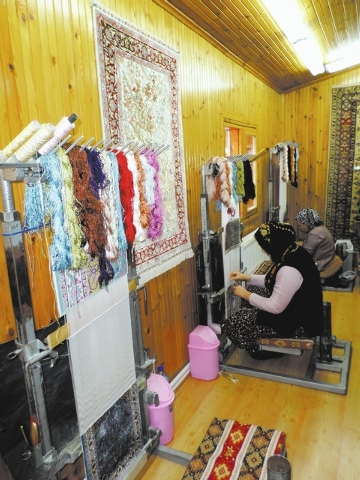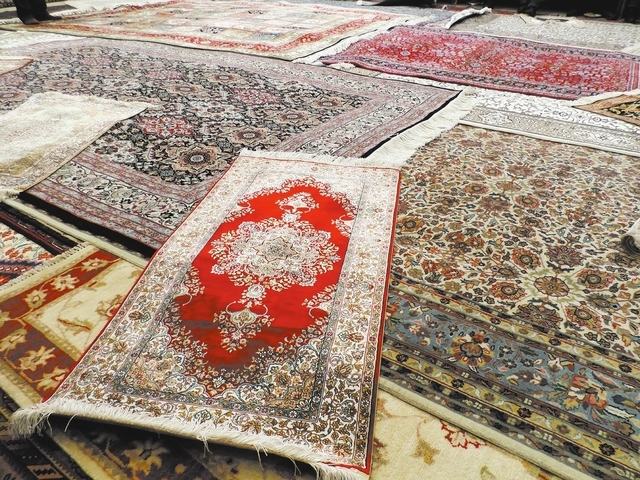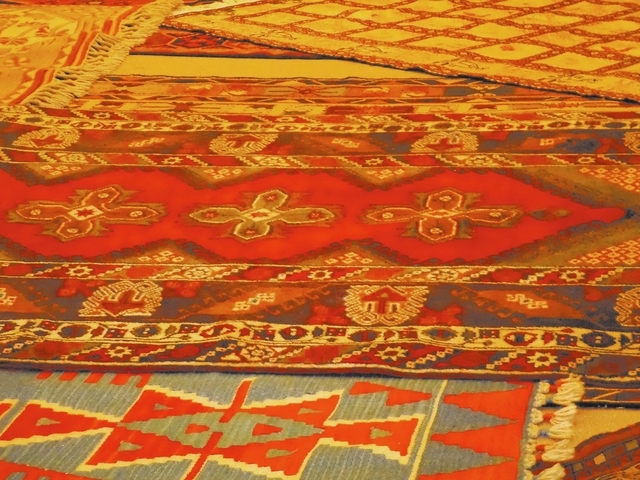Columnist admires intricacies of weaving Turkish carpets
“Acele iŞe Şeytan karıŞır.” English equivalent: Haste makes waste. Meaning: If you hurry your work it will turn out wrong.
One of the top places on my travel bucket list got checked off this year — I was finally able to travel to Turkey. Everybody seems to have different opinions about that country and what it has to offer, but, for me, it was awesome and I got to see and experience some adventures from longtime dreams.
Although there was so much to see and do relative to archaeology, topography and culture, I also was able to visit a Turkish carpet work room and see how these beautiful works of art are made. As someone involved in the design industry for many years, I have always appreciated that Turkish carpets have long been much coveted and highly sought after floor coverings.
They are beautiful and expensive. After seeing how they are made, I have gained a tremendous respect for why those two descriptive words are justified. The words in the quote above are truly followed by the women making these beautiful pieces. It can take months or even years to make some of these rugs.
A little history from Wikipedia: “The oldest records of flat woven kilims come from Çatalhöyük Neolithic pottery, circa 7000 B.C. One of the oldest settlements ever to have been discovered, Çatalhöyük is located southeast of Konya (where I was) in the middle of the Anatolian region.”
Wikipedia gives a great historical compilation of the rugs. “The oldest known hand knotted rug is the famous so-called Pazyryk Carpet, dating back to the 5th century BC. … Very little is then known about the history of rugs until the 12th, 13th and 14th centuries from which Seljuk examples found in various Turkish mosques have survived, nearly all now in museums or private collections.
“In 1272, the Venetian merchant traveler and explorer Marco Polo was the first European writer to mention Anatolian carpets, specifically mentioning the ‘Beautiful rugs of Konya and Karaman.’ Konya carpets are named for the region in which they were made. The modern history of carpets and rugs began in the 19th century when large cottage industry and workshop productions flourished in Iran, Azerbaijan and Central Asia in order to meet the ever increasing demand for handmade carpets on the International market.”
On our visit, we learned that Turkish rugs can be separated from others, such as Persian, because of the motifs, colors and the double knot. Some of the colorways are vibrant and some have a faded appearance.
We also learned that most Turkish folks take off their shoes when they come in so that no outdoor dirt gets on the rugs. They stay clean and often are used to sit or relax on. Of course in all of the mosques and churches shoes come off and the carpets remain clean and vibrant. So these rugs have long life spans.
We should do more of that in our houses!
During our visit to the rug center, we got to see the ladies weaving and then hundreds of finished masterpieces. You can see by the photos how intricate the materials on the looms are; it’s amazing how quick and finite these weavers’ movements were.
Only natural fibers are used in handmade rugs. The most common materials used for the pile are wool, silk and cotton. Sometimes, goat and camel hair are also used by nomadic and village weavers.
Turkish rugs are available at more high-end stores in the U.S. and if you prowl around on the Web you can find places that will direct ship. Just be prepared for the cost. You will, however, have a piece for the rest of your life.
Before you shop, figure out your budget, size and colorways — it will help you to narrow down your selection.
And, of course, you can always go to Turkey to shop. You won’t be disappointed.
Carolyn Muse Grant is a founder and past president of the Architectural &Decorative Arts Society, as well as an interior design consultant/stylist specializing in home staging. Send questions to creativemuse@cox.net.




















